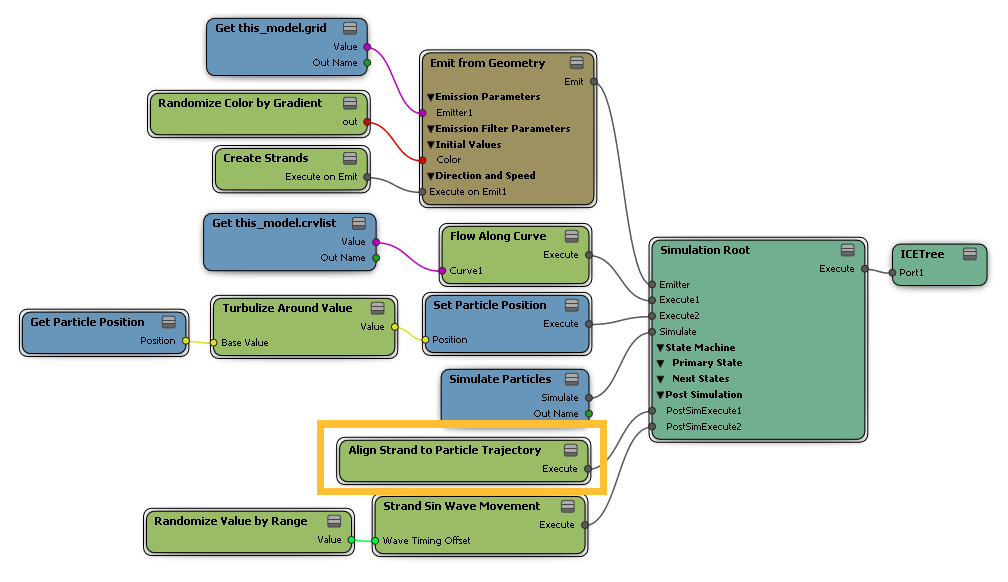The Align Strand to Particle Trajectory compound makes the strands follow exactly along the particles' paths (trajectory). This is useful for creating ribbons, party streamers, or snakes whose trajectory is varied and dynamic.
Unlike the Constrain Strand Length compound that always keeps the strands the same length regardless of movement, these strands may "stretch" a bit in order to follow the particle path.

The strands follow along a curve while being deformed by a sine wave. Because they are aligned along the particle's trajectory, they wriggle according to the direction of movement created by the sine waves.
Select the point cloud with a particle simulation to which you want to add strands. This works with either the Create Strands (see Creating Strands) compounds.
You can have the emission Speed set to 0 to keep the particles and their strands on the emitter, or set it above 0 to have the particles and their strands move away from the emitter.
Choose Particles  After Emission
After Emission  Strands
Strands  Align Strand to Particle Trajectory from the ICE toolbar.
Align Strand to Particle Trajectory from the ICE toolbar.
In the point cloud's ICE tree, the Align Strand to Particle Trajectory compound is added and plugged into a PostSimExecute port on the Simulation Root node.
Having this below the simulator node constrains the strands after the particles are simulated, so the particle's final point position for the frame is used after all other calculations have been done to it (the particle's point position, velocity, rotational velocity, etc.).

 Except where otherwise noted, this work is licensed under a Creative Commons Attribution-NonCommercial-ShareAlike 3.0 Unported License
Except where otherwise noted, this work is licensed under a Creative Commons Attribution-NonCommercial-ShareAlike 3.0 Unported License